
HELPING LAY TRACKS OF PROGRESS
Manoj Kumar
Construction Manager (Track), Railways SBG
“Ballastless Track works is a specialized job being constructed for the first time in Bangladesh,” informs Manoj Kumar from his Dhaka Metro project site, “therefore our challenge was to get the required skillset that was not readily available, and we initially could not import skilled workmen from India due to the travel regulations.” As a counter measure, the team decided to hire local labour and train them to accelerate the works. “We changed the labour employment model from a ‘supply-based’ to a ‘productivity-based’ one to drive delivery.”
Manoj and his team started their works with railway welding and planning based on their learning from labour mobilization, COVID-19 testing, accommodation challenges due to social distancing and revised work methodologies. “We had to motivate both our staff and workmen to commence works following all the SOPs and norms laid down by the site management,” says Manoj.


We changed the labour employment model from a ‘supplybased’ to a ‘productivity-based’ one to drive delivery.
‘We targeted our immediate milestones by micro planning material, plant & machinery and monitoring progress daily,” he points out. “Our first milestone was to hand over the Depot Track Works to receive the train and we did so before our deadline of November 15th,” he shares with a pumped fist. “We achieved this by monitoring progress centrally for each work activity with daily feedback from the site engineers. At the same time, we planned labour and P&M mobilization as per the availability of work fronts and our asking rate.” RFIs were raised daily for Track Works on all work fronts and engineers frequently inspected the checklists while the running bills of the subcontractors were processed regularly to save them from encountering any cashflow issues.
Though even front-line inspectors for the Track works were also infected with COVID-19 during execution, “we offered all the required support such as delivering medicines, medical check-ups, daily requirements, etc. to build trust within team,” he says, even fast tracking constructing the labour colonies within the project.
“Our Project director has always supported us with all the required facilities,” observes a thankful Manoj, “such as employment of a full-time doctor at the site, tie-up with the hospital for the easy access of healthcare during the pandemic and all the required approvals for the commencement of work were cleared on priority.”
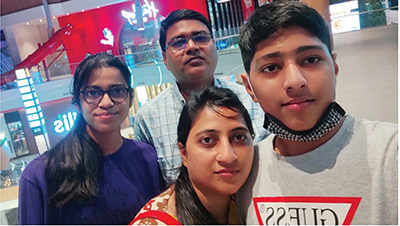
Manoj is from the village of Khoparahiya in Bihar’s Sitamarhi district, is married to Suprita, who is a schoolteacher, and they are blessed with two children, Sriya and Adwitiya. “I love to listen to music,” he says with a smile.
“I am impressed by the dedication and focused approach of my colleagues in the interest of the company,” he says and adds, “also by the company’s effort for staff welfare.”
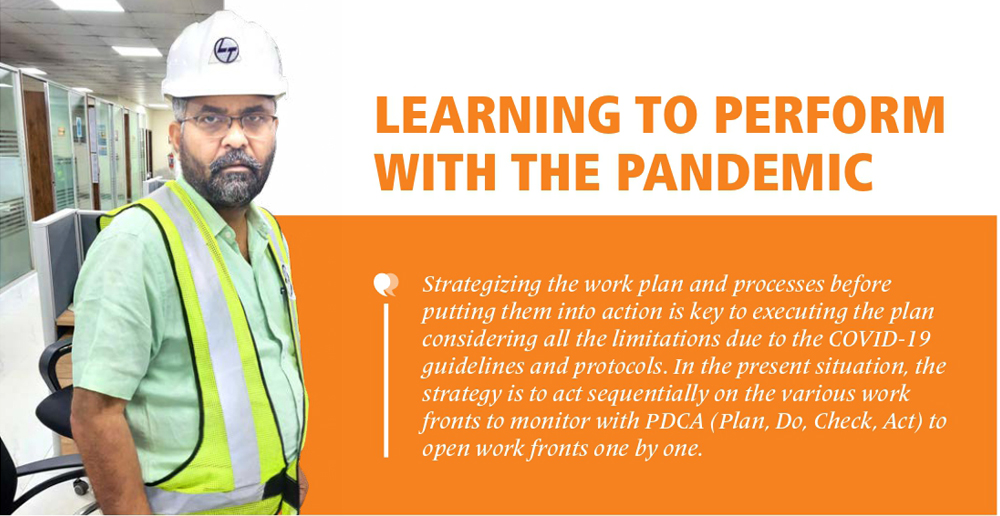
Bhupesh Mahajan
Construction Manager (Mechanical), Railways SBG
“Last year on August 17th, right in the middle of the pandemic, we hoisted a 10 T glass escalator with a tight tolerance of 10 mm,” says Bhupesh Mahajan, sharing a truly memorable moment in his career. “Chances were high that the glass could get damaged if the heavy load swayed out of control, but we finally completed the task of hoisting that massive machine in just 2 hours.” His face beams from a wonderful memory.
At the Dhaka Metro project, Bhupesh is at his first project with L&T and, as he observes, work culture has changed dramatically after the onset of the pandemic. “Strategizing the work plan and processes before putting them into action is key to executing the plan considering all the limitations due to the COVID-19 guidelines and protocols. In the present situation, the strategy is to act sequentially on the various work fronts to monitor with PDCA (Plan, Do, Check, Act) to open work fronts one by one.”
Bhupesh elaborates on his methodical approach. “We prepare measurable activities for each day and at the end of the day, prepare the gap analysis noting the lessons learnt so that by doing minor changes to our approach, we can increase the work target for each consecutive day, all the while, keeping the working staff safe.” He flags off a new development of material inspections being conducted digitally without affecting progress. “Digital solutions are safe and smart ways to communicate that have opened a new horizon for effective and productive communication,” he adds. Bhupesh is thankful for the support and cooperation of his seniors and team members to provide timely resources and facilities to fight the pandemic.
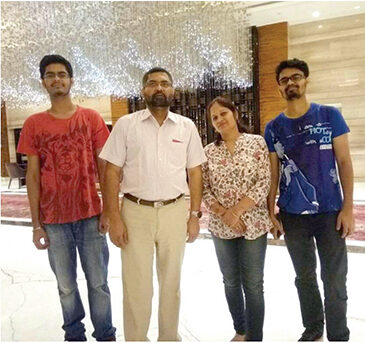
On his personal front, Bhupesh is obviously proud of the achievements of his two sons. “My elder son, Abhinav is doing his MS in Digital Applications in Mechanical Engineering in Computational Fluid Dynamics from Germany and, Pranav, my younger son is pursuing engineering from Delhi Technical University,” he shares. Hailing from Jalandhar in Punjab, Bhupesh is married to Deepali, a homemaker. “I like listening to Punjabi folk music and playing the folk instrument, Tumbi, during weekends or sometimes in the night,” he smiles.
About his association with the organization, he says, “L&T takes care of every employee at the work front and provides every employee with all the facilities to perform. Finally it depends on the individual for sky is the limit!”
RE-ADAPTING TO KEEP THINGS ON TRACK
Shamim Ahmad Khan
Constriction Manager (Electrical), Railways SBG
Although the Dhaka Metro Rail project is Shamim Khan’s first with L&T, he brings with him rich experience of having worked with the Indian Railways and handled many railway electrification projects. “I have also worked for WS Atkins Rails for the West Coast Main Line modernisation project in the UK,” he adds with a smile. However, his smile disappears as soon as the conversation turns to the present situation. “Work culture has totally changed after the COVID-19 unlock guidelines,” he says grimly. “It is tough to keep our workmen and staff safe following the SOPs, but the real challenge is to achieve our targets and project milestones as per our committed schedule.”
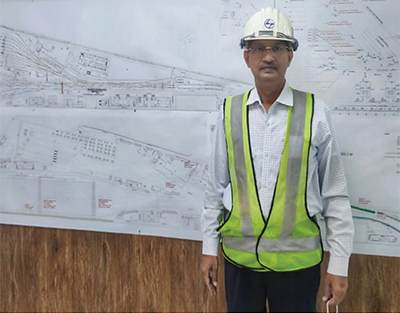

We faced material constraints and although we received an extension till April 21, we achieved our milestone in December itself
“Post unlock, our first milestone was to complete the depot phase-1 OCS works to receive the first set of trains by November 2020,” he says, laying out his immediate goal. “We faced material constraints and although we received an extension till April 21, we achieved our milestone in December itself.” The team succeeded thanks to their coordinated efforts preparing daily measurable activities, identifying the gaps, learning from mistakes, and making course corrections to increase the work target for the following day. “We scattered the different activities across several locations to minimise physical contact,” Shamim adds.
While all meetings and material inspections were conducted virtually and manufacture of material continued, “group site walks helped us push rapid progress by imparting instructions with digital solutions,’ he points out. “Digital solutions are safe and smart ways to communicate that have opened a new horizon to receive and share effective and productive communication.” Shamim is full of praise and thankful for the support and cooperation from his seniors and team members to fight the pandemic by providing timely resources and facilities.
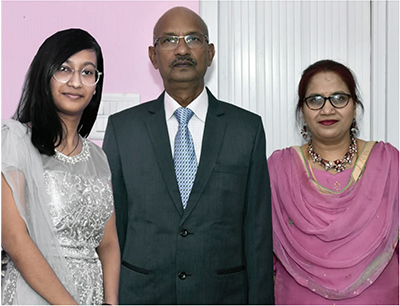
One of Shamim’s hobbies is to do social work especially when he is at his hometown of Gorakhpur in Uttar Pradesh. He is married to Ghazala Haroon, a homemaker, and they are blessed with three daughters, Arshiya Khan, Saman Khan and Alina Khan. “Two of them are married and the youngest is living with us,” he shares.
“The charging of the Phase-1 OCS depot has been my most memorable moment here at the Dhaka Metro project till date,” he says, smiling brightly, and now he waits excitedly for its charging scheduled for April, 2021.

Chandan Kumar
Project Manager, Railways SBG
L&T’s tagline, “We make things that make India proud’ is what Chandan Kumar finds most remarkable about the organization that he joined as a GET in July 2008. Over the next 13 years, he has worked at 7 different projects or locations in various capacities and presently he is Project Manager at the Dindigul-Palghat (Gr. 273), Pollachi-Podanur (Gr. 274) and Shoranur-Nilambur (Gr. 275) railway electrification project for the Railways SBG. “I have been Project Manager since June 2020 and have had to face the adverse impact of the pandemic from day one,” he shares with a shake of his head. “After unlock, our three primary concerns were the scarcity of workmen in Tamil Nadu, difficult in remobilizing labour due to the travel restrictions and a rocky, unapproachable terrain at site.”
When operations resumed in June 2020, Chandan and team identified and focused on the most opportune sections to push progress with the limited manpower at their disposal. “We were only able to mobilize labour from outside Tamil Nadu by September after which progress has been much faster,” he remarks. “Design modifications were finalized in a focused manner right at the initial stages itself to create design-based work-fronts to avoid any labour idling. In terms of the terrain, we divided it into three: normal soil, normal soil but with high bank and rock strata, and then deployed the necessary resources accordingly to increase productivity.” To monitor progress, Chandan refers to a detailed Excel based tracker that was prepared at site and published and even shared with the management regularly along with the details of the Tilos used at the central office.
Chandan acknowledges the client’s support during these testing times by granting permissions for inter and intra district labour and vehicle movement that went a long way to drive progress. “They also gave us some Railway land to put up temporary sheds to accommodate our workmen.” Post lockdown, the team has ensured restriction on physical contact, increased use of digitalization and decreased avoidable paperwork to eliminate the COVID-19 hazard as well as save time. “We track progress on Procube as it is convenient and essential for anyone even from remote locations to be able to update progress on a daily basis,” points out Chandan.
The birth of his daughter, Jaanvi Sharma, is Chandan’s most memorable moment. Hailing from Patna, Bihar, he is married to Pallavi who was software engineer with CTS for 8 years before quitting job in 2019 to take care of family. “I like creating new wooden objects from scraps and other waste material, however, nowadays time is a luxury that I cannot afford,” he smiles ruefully.

BUILDING STRONG CONNECTIONS
Ashok Pandita
Manager (Signalling & Communication),
Railways SBG
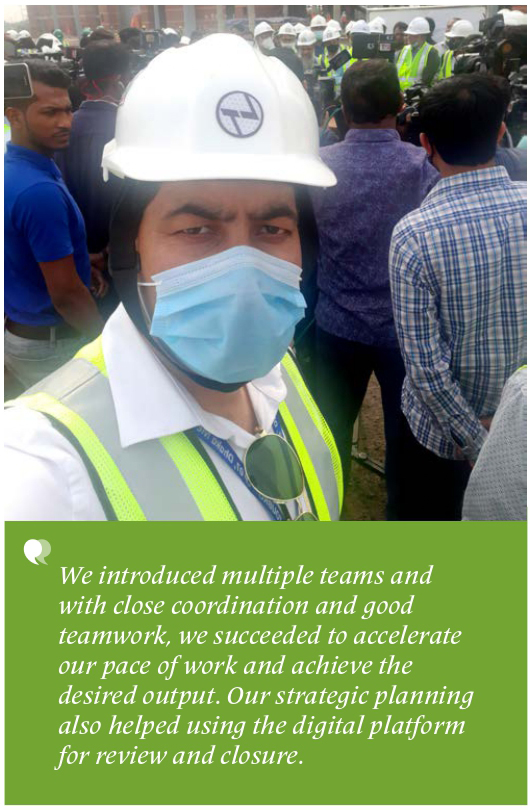
He is a telecommunication system expert and at the Dhaka Metro project CP07 Package for MRT Line-06, Ashok Pandita has overall responsibility for the design, delivery, execution till handover of the project’s entire telecom works. He brings with him rich experience from having handled the signalling & communication for the Western Dedicated Freight Corridor JNPT-Vadodara project from July 2017 to April 2018. “The challenge here after the outbreak of the pandemic was to quickly adapt to the new safety protocols,” he says. “Even during the lockdown, we were interfacing with our vendors from home but after the unlock, we were forced to interface with some of them physically which was challenging.”
Work had to proceed irrespective of the pandemic. “We introduced multiple teams and with close coordination and good teamwork, we succeeded to accelerate our pace of work and achieve the desired output,” remarks Ashok. “Our strategic planning also helped using the digital platform for review and closure. We were in constant touch with the Employer, Engineer and colleagues by making regular follow-ups and carrying out our duties with honesty and sincerity following the company’s code of conduct.”
After the unlock, the first major step the team took was to finalize and institutionalize the COVID-19 protocols that were binding on all – contractors, subcontractors, employees, and workmen, “and,” adds Ashok, “we had regular progress meetings with our Employer, Engineer, Contractor and Subcontractor that helped to address the challenges and how to mitigate and resolve them and understand realistic progress at site. We have worked like a team; Team L&T stood together and supported each other, socially and professionally.”
Progress at work is monitored through the WBS (Work Breakdown Structure), maintaining Daily, Weekly and Monthly Progress Reports. The team used EMTRACK to track material inventory while TORQ helped generate and close RFIs digitally.
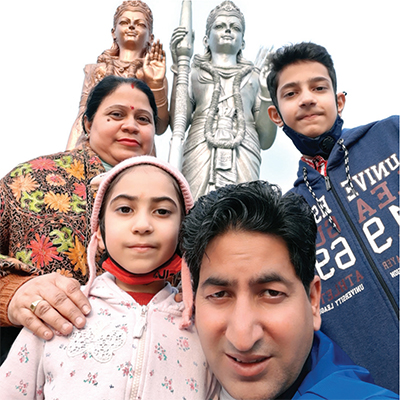
Although Ashok hails from Kashmir, he is presently living in New Delhi with his wife, Rupali Sharma, a homemaker, and two children, Shivom and Aditri. He is most happy when listening to music, watching movies, sports especially cricket and when he is with his family.
“Though every aspect of L&T’s businesses is characterized by professionalism and high standards of corporate governance, sustainability is embedded into our long-term strategy for growth,” he says. “L&T is a career-oriented company growing fast across all its segments nationally and internationally and provides the best opportunities for employees to build their career through our skill development centres. I am proud to be a part of this organization,” he signs off in awe of the company he keeps.
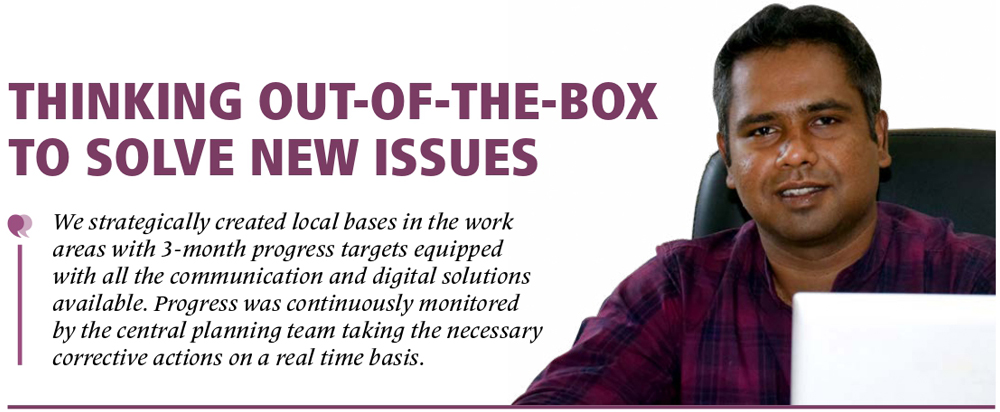
M N Venkatesh
Construction Manager (Electrical), Railways SBG
Chief Project Manager of the CORE EPC-07 project, M N Venkatesh had the same issues as all other projects: lack of labour, difficulty to mobilize them, supply chain disruptions, poor utilization of P&M and other resources, and more. “We took the scarcity of skilled workmen as an opportunity and decided to hire non-conventional local workmen who were anyway jobless due to the economic situation,” he shares. “We engaged local agencies who had been involved in other building projects to take up OHE foundation works. Only a few of them succeeded but we keep mobilizing them to meet up our work requirement until the relaxations were announced and we again started to get large numbers of migrated teams.”
Work commenced on the appointed date that has helped the team meet their milestone targets and stay ahead of their customer’s requirements. “We strategically created local bases in the work areas with 3-month progress targets equipped with all the communication and digital solutions available. Progress was continuously monitored by the central planning team taking the necessary corrective actions on a real time basis.” Venkatesh’s modus operandi was spot on and the project was quickly back on rails. Focusing more on P&M, the team commenced cylindrical foundation that straight away reduced the requirement of workmen by 20%. “The restrictions in train movement meant more traffic blocks that we effectively utilized to quickly complete track dependent OHE works,” says Venkatesh about another clever ploy. “We could run the engine all along the section with a video camera to closely and centrally assess site challenges.”
The site team readily adopted all the available digital initiatives like Procube to monitor progress and TILOS for project scheduling that helped them with their strategies and invoicing plans too. “Our customer readily agreed to online discussions and processed all our drawings digitally,” Venkatesh adds, “in a way, every stakeholder understood and accepted these new ways to connect and communicate.”
Having joined L&T as a GET in the Batch of 2010, Venkatesh has already earned his spurs at the Delhi Metro Phase 2 Underground ROCS, Manmad-Daund & the Roha-Verna railway projects before his present assignment. “Our Cluster Head, Phanendra Kumar, has a vison to make this project one of the fastest in Indian Railway history and we have converted his vision into strategy,” says Venkatesh. “Ours is a young team of dynamic engineers with the energy to achieve the impossible.”

Venkatesh hails from the Nanjangud Taluk in Karnataka’s Mysore district and is married to Sahaja, a postgraduate in management studies, privately investing in financial market who used to work with PricewaterhouseCoopers till 2017. They are blessed with one daughter, Snigdha. His hobbies are trekking, swimming, and kayaking.
“It is a great feeling to see your hard work converted into national infrastructure that changes people’s lives,” he says proudly, “and that opportunity I get at L&T!”
“HARD WORK ALWAYS PAYS!”
Pawan Verma
Project Manager, Railways SBG
Pawan Verma is Project Manager for Package-1 (Gr 272- SalemVridachalam-Cuddalore Port) that is a part of the three packages of an electrification project awarded to the Railways SBG which is in turn part of the ambitious ‘Mission Electrification’ initiative of the Central Government to electrify the entire Indian Railway Network to reduce the carbon footprint as well as reduce expenditure on diesel. “We are responsible for the complete electrification of 215 TKM which includes 1 TSS and 10 SP/SSP,” informs Pawan, “and Package-1 was the first section in the EPC 7 project to start works from the appointed date,” he says emphatically.
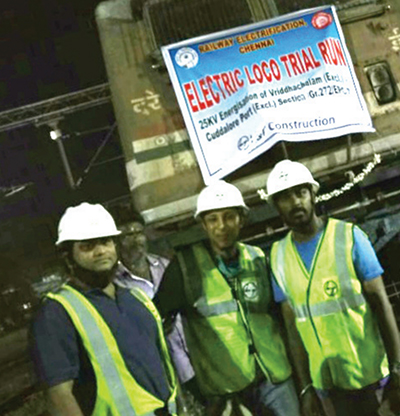

We took these challenges in our stride and with close coordination, perfect understanding and with the available limited resources, we completed the first block section within just 276 days from the date of commencement!
Even as he and his team kicked off from the word ‘go’, they encountered some of the same challenges that projects all over were facing that of scarcity of labour, the lack of material at site due to disruption in supply lines and working under the new, strict COVID-19 guidelines. “We took these challenges in our stride and with close coordination, perfect understanding and with the available limited resources especially at the initial phase of the project, we completed the CRS Inspection of Cuddalore Port Junction (CUPJ) – Vriddhachalam (VRI) (59 TKM) first block section within just 276 days from the date of commencement!” In the process, Pawan and his project team also set a record of erecting the highest number of masts in a single day.
Pawan attributes his team’s success to motivation, closely monitoring individual activities to improve cycle times for OHE execution and training the workmen with their technical expertise. “We put in place systems and processes to observe and complete construction work.” shares Pawan. “We adequately accessed the required amount of material and level of workmanship and dealt with vendors only after verifying their ability to deliver.”
Pawan reiterates their adherence to the SOPs and guidelines to control the spread of the pandemic, informing all the workmen before commencement of work, equipping them with the requisite PPE and implementing digital initiatives at site. “We are targeting to complete the entire project by October 2nd and are committed to achieve it,” says Pawan confidently.
“Hard work always pays,” says Pawan, describing his long association with L&T across several electrification projects before his present one including the Delhi-Rewari EPC-01, Jaipur-Phulera and Jaipur-Jagatpura projects as OHE In-charge and before that the Daund-Pune project as a design engineer, the Daund-Bhigwan and Manmad-Daund projects.

Hailing from Bhopal, Madhya Pradesh, Pawan is married to Ritu Patel, a homemaker, and they are blessed with a son, Jiyaansh. He enjoys playing and watching cricket during his free time.